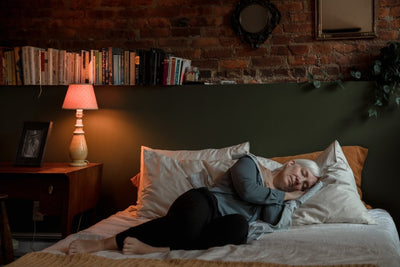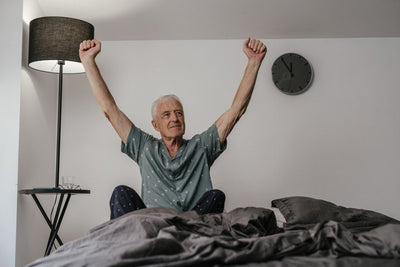Bed Height For The Elderly: How to Recognize a Too-High Bed
The best bed height for the elderly makes it easy for them to get in and out of bed. A bed that is too low can make it difficult for them to get out of bed, and a bed that is too high can make it difficult for them to get in.
Even minor falls may be dangerous to us as we become older. For people over 65, falls frequently result in hospitalization and long-term loss of mobility and independence. The risk of death from a fall is greater in people over the age of 80.
Learn more about the best bed height and where to find a bed monitor for the elderly.
Which Bed Height Is Best For Older People?
The Disability Rights Education and Defense Fund now suggests maintaining mattresses 20 to 23 inches from the ground from the top of the mattress.
However, this plan focuses mostly on making getting in and out of bed from a wheelchair easier rather than necessarily considering what is optimal for a certain older adult.
Since not all elderly individuals need a wheelchair, the individual's height is a more crucial factor.
Older people come in a range of heights, despite age-related height reduction. Therefore, the suitable bed height should be altered to meet their specific needs.
Without straining or needing to use their hands for support, the person should be able to gently lower themselves into a sitting position with both feet firmly planted on the ground.
How to Recognize a Too-High Bed
- The thighs or buttocks shouldn't be forced up against the top of the mattress when lying against a bed.
- The old person must either get up on tiptoes or push themselves onto the bed with their hands.
- The feet are not firmly and squarely placed on the ground when seated.
- The knees and hips are not aligned.
- The senior is perched on the edge of the bed rather than being too far back in the chair.
Advantages of A Higher Bed
- Unexpectedly, there are certain advantages to having a higher bed.
- It's easier to get out of a higher bed.
- Under the bed is additional storage space.
- It's easier to make and keep a higher bed.
Alternatives to Enhance Seniors' Bed Safety
Purchasing a new bed immediately or attempting to lower or elevate an existing one is not compulsory. Several options might make it safer for seniors to get in and out of bed while lowering the risk of harm.
A set of bed steps for the elderly should be purchased so the older adult may use them to ascend to a higher bed. This is an excellent option since it simplifies getting out of a high bed.
Install a bed rail if you're concerned about falling out of bed. The bed rail can be used as a handhold to assist in getting in and out of bed.
Install a night light to make it simple to see where to go while getting in and out of bed at all-night hours.
Bedding, floor coverings, and other linens should all be placed high off the ground and away from any hazards that might cause tripping.
Please remember that these bed height restrictions apply to all seniors' bed types, including daybeds and adjustable beds.
Conclusion
Elderly individuals must prioritize their bedroom safety, and the greatest place to start is by positioning their beds at the ideal height. If none of those resolutions solve the problem, it may be the right time to purchase a new, safer sleeping arrangement like a bed monitor or bed step stool for the elderly.
We at HearGlow think that a bed monitor for the elderly can help provide the proper bed height for your elderly loved ones. Visit our website for more information about elderly care!
Related Articles
Read more Bedroom Safety for Seniors articles.









